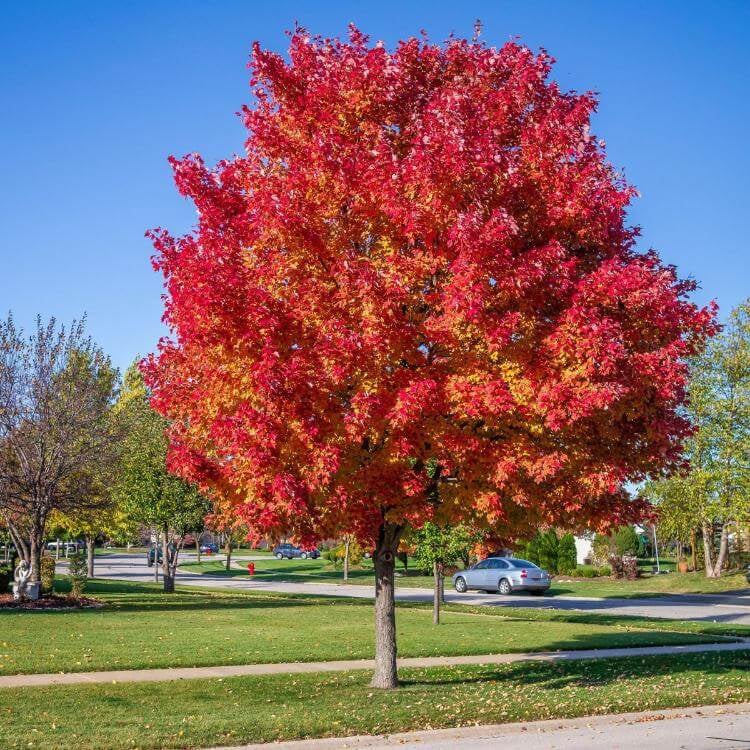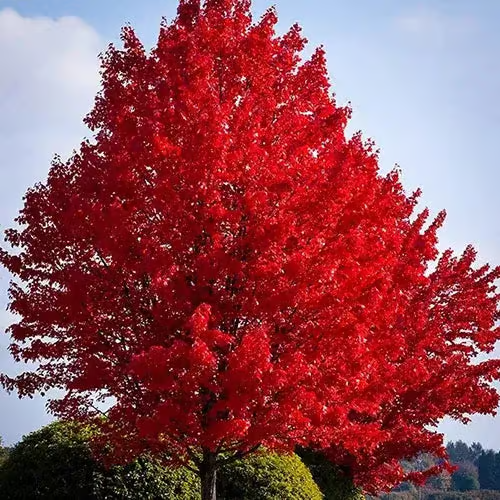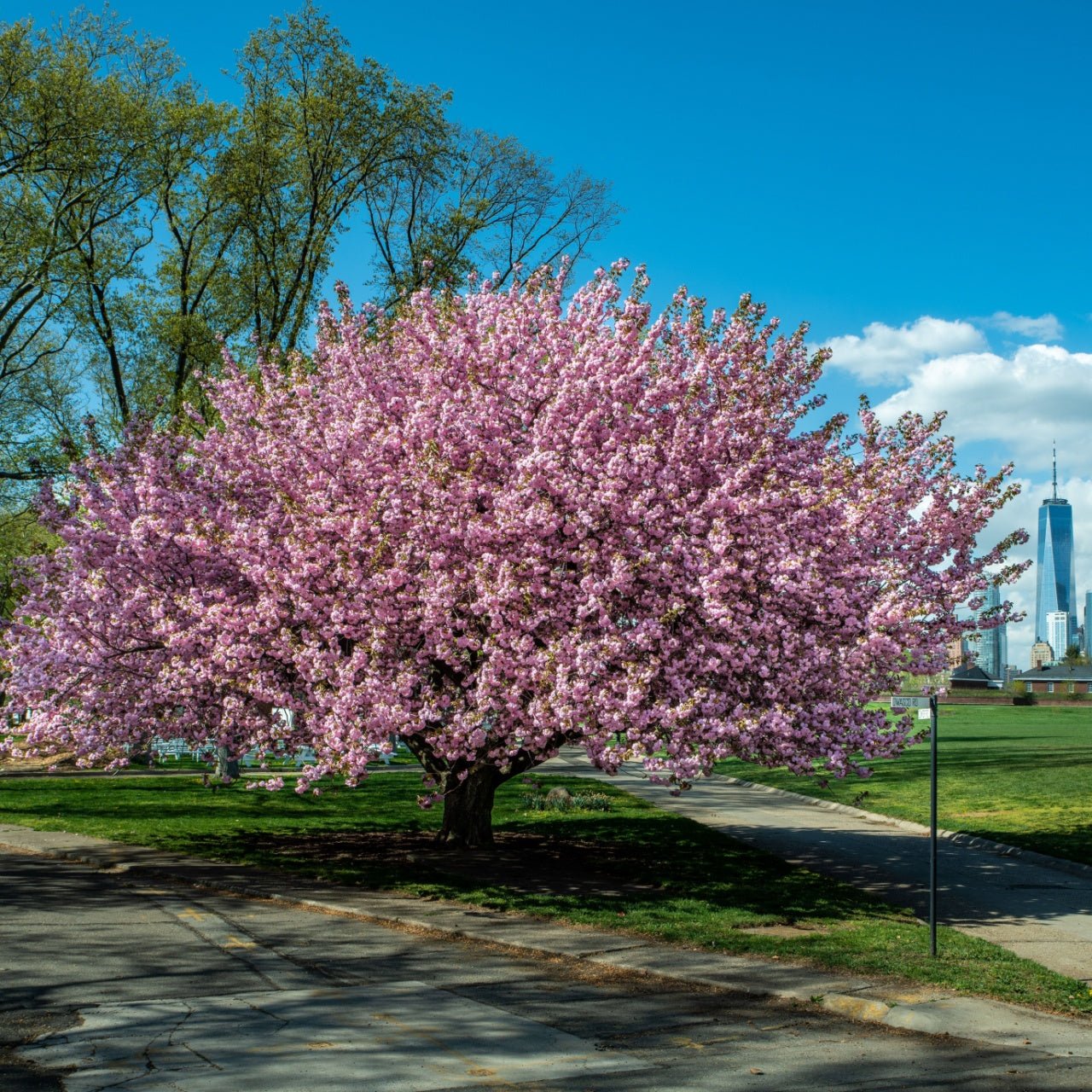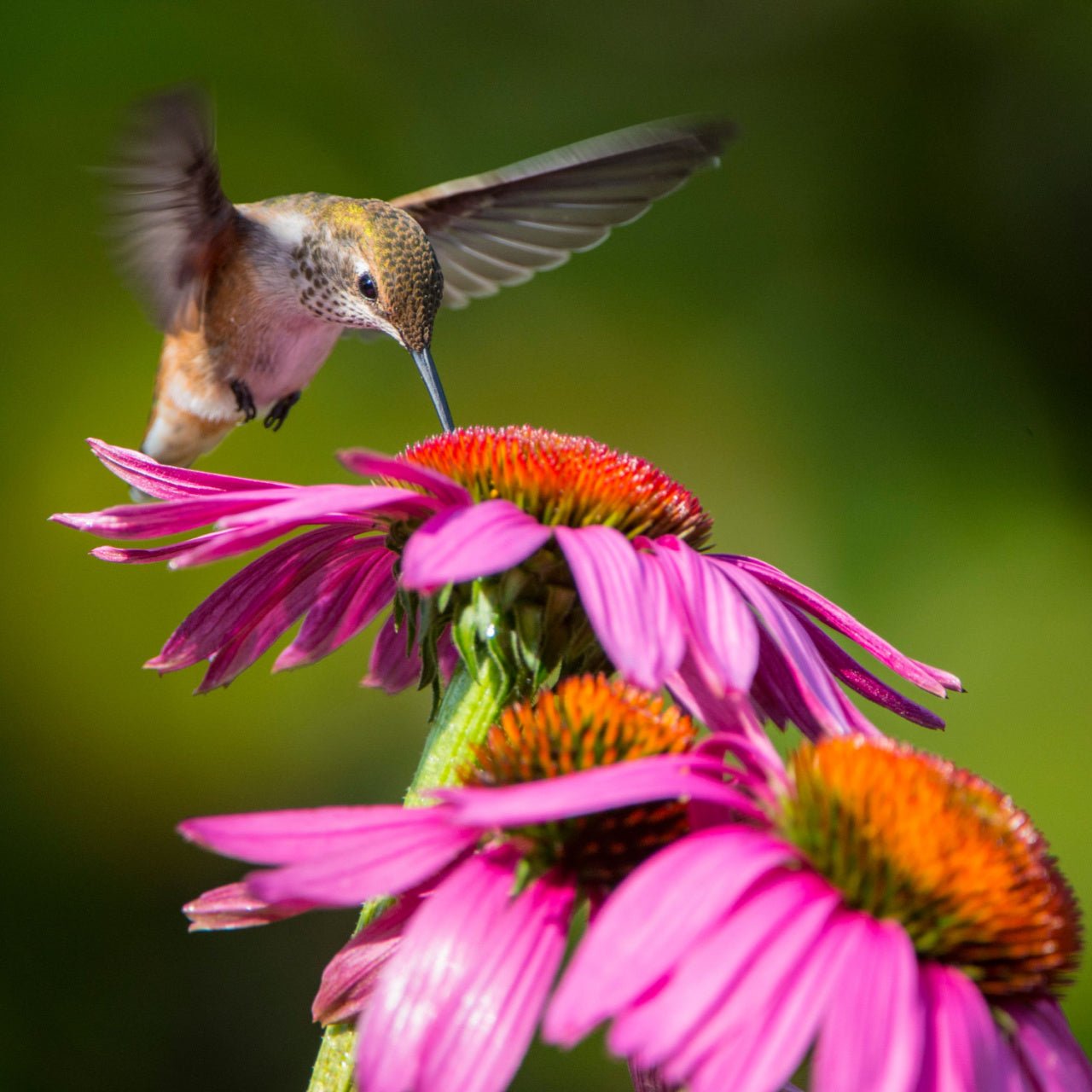


Red Sunset Maple
Fast-growing shade provider
Enhances property aesthetics
Tolerant to various soils
Thrives in
ZONE 3ZONE 4ZONE 5ZONE 6ZONE 7ZONE 8This plant ships:
November 20251 Year Guarantee on all plants
Red Sunset Maple - Acer rubrum 'Red Sunset'
You may never have known its name, but you have certainly seen the Red Sunset Maple. In its full, autumnal glory it is hard to miss! This North American native can be found in almost all 50 states, as it is extremely hardy and adapts well to many climates. In the autumn, these trees’ leaves turn a vibrant orange and red, and are part of the distinct “fall foliage” of the east coast of the United States. You can recreate its natural beauty right in your garden, too!
Plant Details - Red Sunset Maple
Family: Sapindaceae
Light Requirement: Full sun to part shade
Water Needs: Moderate to Heavy
Height: 40-50 ft
Spread: 30-50 ft
Growth Rate: Moderate
Soil Preference: Moist, well drained, slightly acidic
Season of Interest: Autumn
Fruit: Two-winged samara
Wildlife Value: Attracts birds, caterpillars and other insects feed on the leaves
Notable Characteristics - Red Sunset Maple
The most notable characteristic about these magnificent trees is, of course, their fall color. The distinct leaves are finely serrated on the edges and have a three-pronged look, with several smaller teeth surrounding the main three sections. These leaves are a soft green color in summer and provide wonderful shade. In summer, the Red Sunset Maple does not exactly flower, but reproduces via samaras. These are the typical “winged” seed pods found on maple trees. The rounded, paper thin dried leaves above the seed help it catch the wind and fly long distances to take root.
Landscape and Maintenance
The Red Sunset Maple is a very hardy tree, thriving in all kinds of temperature, soil, water and sun conditions. Its foliage will thrive best with full sun to partial sun, and moderate to heavy water. It prefers moist soil that is well drained but slightly acidic. It can grow to be up to 50 ft tall, but many backyard varieties are unlikely to reach that height. However, do consider this when planting in your garden. These trees are susceptible to damage from insects like aphids, leafhoppers, boreres, scale and caterpillars. The glorious sunset colors this tree provides make it a beautiful addition to any garden, particularly one whose flowers shine in the summer so the maple’s foliage can shine in the autumn.
How can you tell the difference between a silver and a scarlet?
They have deeply lobed leaves with a silvery sheen, more rounded lobes, and fewer ruffled edges. They also have an excellent fall color of red-orange, while Silver only turns yellow or pale green.
How Fast Does Red Sunset Maple Grow?
They are one of the fastest-growing trees, at a growth rate of about 1-2 feet per year. However, if taken care of well and sown in a good environment, their growth rate can improve.
How tall do Red Sunset Maple Grow?
Red Sunset Maples grow up to 40- 60 ft tall, and the size of this tree is estimated to be about 35- 40 ft wide. Their geometrical and symmetric form make them suitable for an area with enough space to accommodate their growth.
This Is How Your Plants Will Look upon Delivery

Bloom Season
Spring
Bloom/Foliage Color
Red
Height at Maturity
Over 25 Feet
Care
The Red Sunset Maple trees are super fast growing and with virbant fall foliage.
Plant Reproduction
Red Sunset Maple trees reproduce with seeds and are grafted.
Plant bare root trees during the dormant season in early spring or late fall (November through April). Dig the hole twice as wide as the roots so the soil is well-drained. Position the tree so the root flare is at or just above ground level. Fill the hole back with the soil you dug from and water. Maintain soil moisture, especially in the tree's early years, by providing deep, regular watering. Apply a 2-4 inch mulch away from the trunk at the base to retain moisture and suppress weeds. Prune trees during the first few seasons to establish strength and resilience, remove damaged branches, and continue maintenance pruning as the tree matures. Regularly inspect for pests and diseases and apply integrated pest management practices. Protect young trees from mechanical damage and extreme temperatures with tree guards, and stake them if necessary for support, removing the stakes after one or two years.
Shipping date depends on the date displayed and chosen when you order from the product's page.
We only accept returns on plants verified dead. If you think your plants have died, we offer a 1 year warranty, please use this File a Claim Link to verify dead plants and start with return warranty process.





Stunning Fall Foliage:
The Red Maple Tree is known for its breathtaking red leaves in autumn. The vibrant fall colors make it a standout feature in any landscape, providing seasonal beauty.
Hardy and Resilient:
This tree is tough and can withstand various environmental stresses. Its resilience ensures long-term growth and minimal maintenance, making it a reliable choice.
Shade and Shelter:
The Red Maple Tree grows to provide ample shade and shelter. Its large canopy can offer a cool retreat during hot weather and protect against strong winds.
Low Maintenance:
Once established, the Red Maple Tree requires minimal care. Its low maintenance needs make it an ideal tree for busy gardeners or those new to gardening.
Caring Tips
How do I care for my Red Sunset Maple?
Each box contains detailed care instructions and information about your product. But here's the basics.
Care Tips
The Red Sunset Maple trees are super fast growing and with virbant fall foliage.
Light Requirements
Red Sunset Maple trees thrive in full sun and are disease resistant.
Hardy Planting Zones
3 • 4 • 5 • 6 • 7 • 8
Header
Use this content to share information about your store and products.
Frequently Asked Questions
How often should I water my plants?
How do I know if my plant is getting too much or too little sunlight?
What should I do to prepare my plants for winter?
What are the signs that my plant needs fertilizing?
How can I prevent pests from damaging my plants?
How do I choose the right plant for my climate zone?






